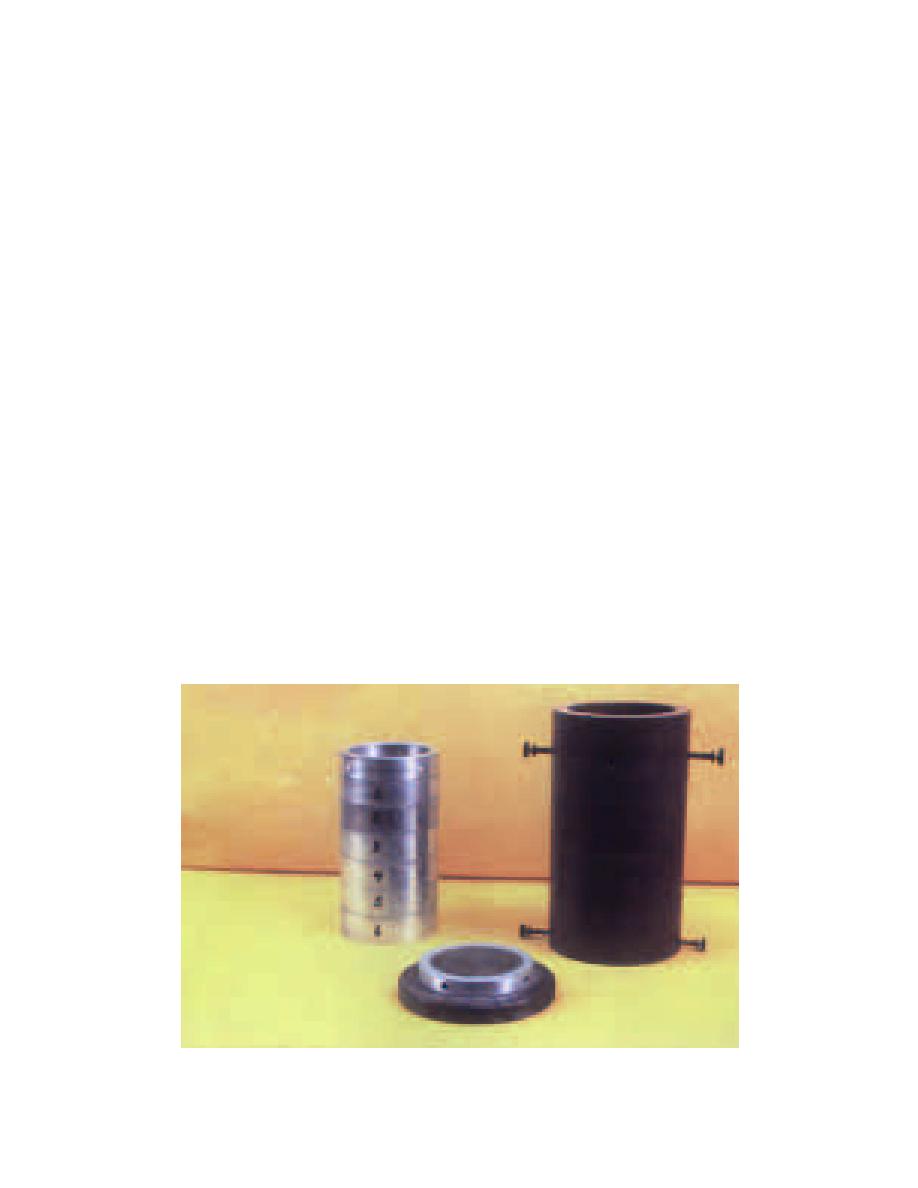
APPENDIX A: UNIFORM DENSITY AND MOISTURE CONTENT
Before the fabrication of the test specimens, a small study was conducted to
develop a method for preparing samples with a uniform density and moisture con-
tent using the kneading compactor. The focus was on uniform density, as uniform
moisture contents were easily obtained by thoroughly mixing the soil with the right
amount of water. The approach used was similar to that of Baltzer and Irwin (1995).
They found through experimentation that by controlling the compaction load and
number of tamps, they were able to produce uniform density A-4 test specimens
within tolerable limits.
For the sands and the fine-grained soils, the test material was material finer then
the no. 4 sieve. For the coarser A-1-a and the A-4 soils, aggregates larger than 1.5 in.
(38 mm) were removed from the test gradation. The test sample dimensions for the
sands and fine-grained soils was 2.8 in. (71 mm) in diameter and 6.0 in. (152 mm)
tall. For the coarse-grained soils, the sample size was 6.0 in. (152 mm) in diameter
and 12.0 in. (304 mm) high. These sizes are in accordance to the AASHTO Provi-
sional Standard TP46-94.
The procedure developed was similar for both types of soils, with some excep-
tions. Test samples were compacted in specially designed cylinders of split ring
developed for both the 2.8-in.- (71-mm-) and 6-in.- (152-mm-) diam. test specimens
(Fig. A1). The rings for the fine-grained soils were made from aluminum and were
1 in. (25 mm) in height. For the coarse- and fine-grained soils, the rings were made
from plastic and were 2 in. (50 mm) in height. These rings were stacked in an alu-
minum cylinder. For the fine-grained soils, the outer ring was made from plastic,
whereas for the coarse-grained material it became necessary to make the outer ring
(split mold) from aluminum (Fig. A2) because of the higher compaction pres-
sures. The high pressures were causing the plastic outer ring to deform. The addi-
tional ring on top was used to compact an additional layer. We found in previous
attempts that the density of the top layer was always lower than the remaining
Figure A1. Split ring mold used for uniform density verification tests.
25



 Previous Page
Previous Page
